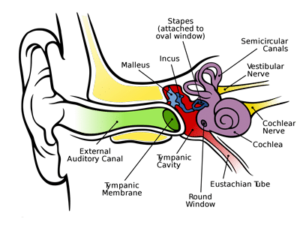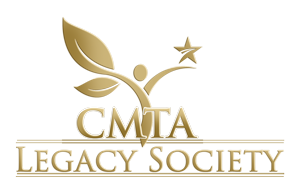Hearing Loss and Charcot-Marie-Tooth Disease

The association between hearing loss and CMT has long been recognized, with the first published work on the subject dating back to the seventies. This association is not surprising, as our sense of hearing relies on nerves (cochlear nerves) to connect our inner ear sound detection system to the part of our brains that interprets sound. Just as the nerves in our legs and arms can be affected by CMT, so can the cochlear nerves. Interestingly, the rate of incidence of CMT-related hearing loss varies by CMT subtype.
The Inherited Neuropathies Consortium (INC) Natural History Study, the most comprehensive effort to date to characterize the way the different subtypes of CMT progress over time, studied the number of patients with various types of CMT who complained of hearing loss. Approximately 15% of patients with CMT1A, the most common type of CMT, complained of hearing loss, underscoring the need to better characterize and understand this relatively prevalent complaint.
An even larger proportion of patients with CMT1B and recessive forms of CMT (CMT4) noted the same issue (28.2% and 30%, respectively). Other CMT subtypes associated with hearing loss include hereditary neuropathy with liability to pressure palsies (HNPP), CMT1X, and CMT2A. CMT-related hearing loss usually affects both ears equally, interferes with mid and high frequency sounds, and ranges from mild to severe.
A common complaint among patients with CMT-related hearing loss is difficulty understanding others when in an environment with loud background noise (a party or concert, for example). Hearing loss can significantly impact the quality of life of patients and impair communication and learning development of children with CMT, especially if left undiagnosed for a long period of time.
Hearing screening tests and active discussions between patients and physicians are important and helpful strategies to identify and cope with CMT-related hearing loss. The use of hearing aids can also be very useful, and new technology using dedicated mobile apps allows for customized adaptations to the hearing aid system in response to specific environments and social circumstances.
Studies Explore “Hidden” Hearing Loss and CMT
“Psychoacoustics and neurophysiological auditory processing in patients with Charcot‐Marie‐Tooth disease types 1A and 2A,” a study published June 1, 2020, in the European Journal of Neurology, reported differences in hearing loss between patients with CMT1A and CMT2A. While the audiograms of the 43 CMT1A and 15 CMT2A patients studied were normal, the CMT1A patients had both degraded temporal and spectral processing, whereas the CMT2A patients did not have reduced spectral resolution but showed larger reduction in temporal resolution than the CMT1A patients.
An earlier study by J.E. Choi, et al, “Hidden hearing loss in patients with Charcot-Marie-Tooth disease type 1A,” published July 9, 2018, in Scientific Reports is open access and provides additional information on how CMT1A patients with normal audiograms can have difficulty hearing in their daily lives.





